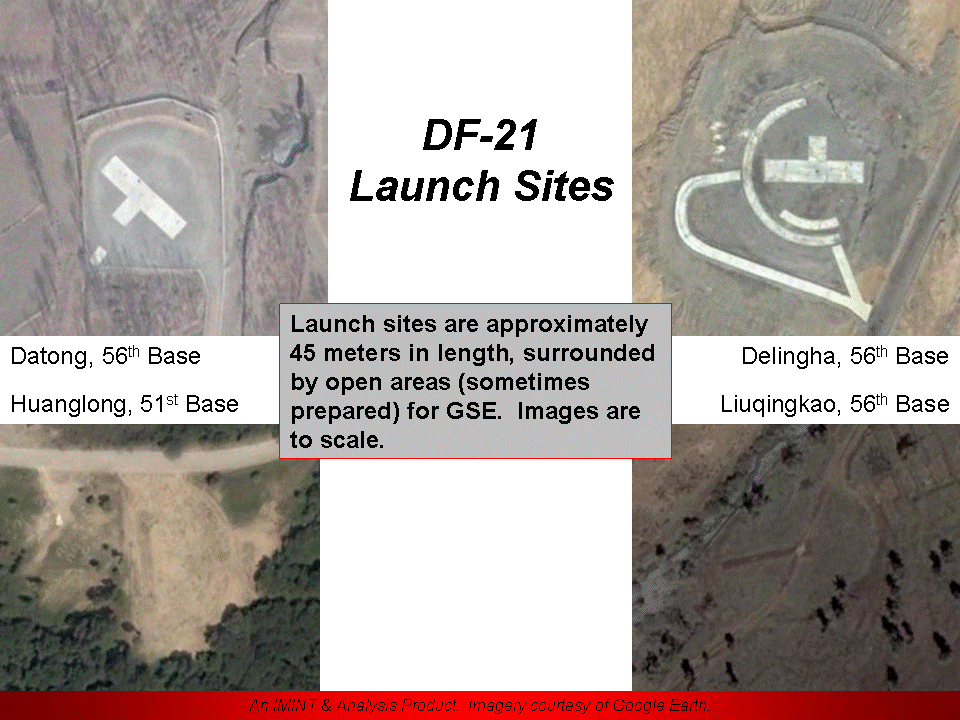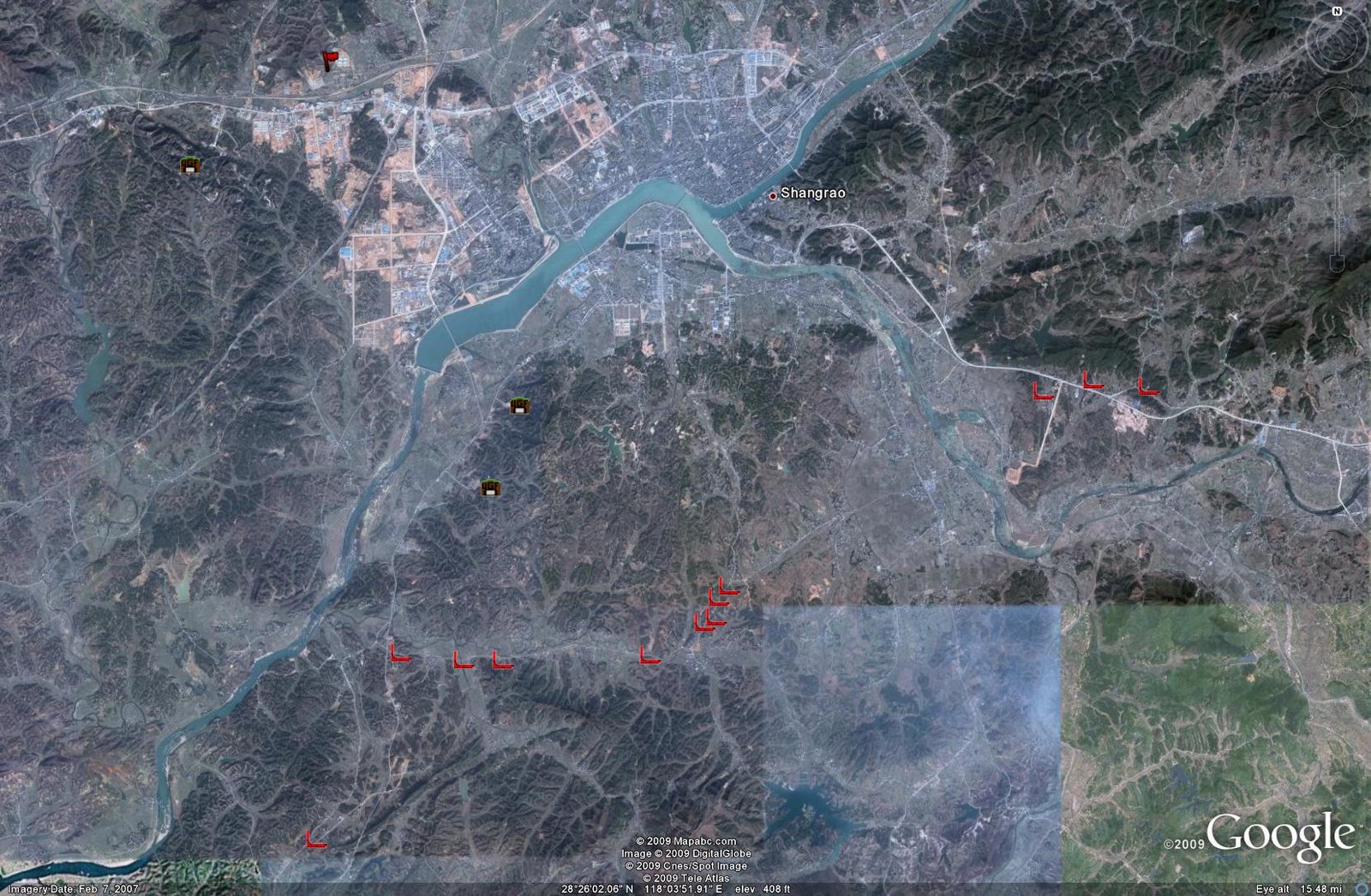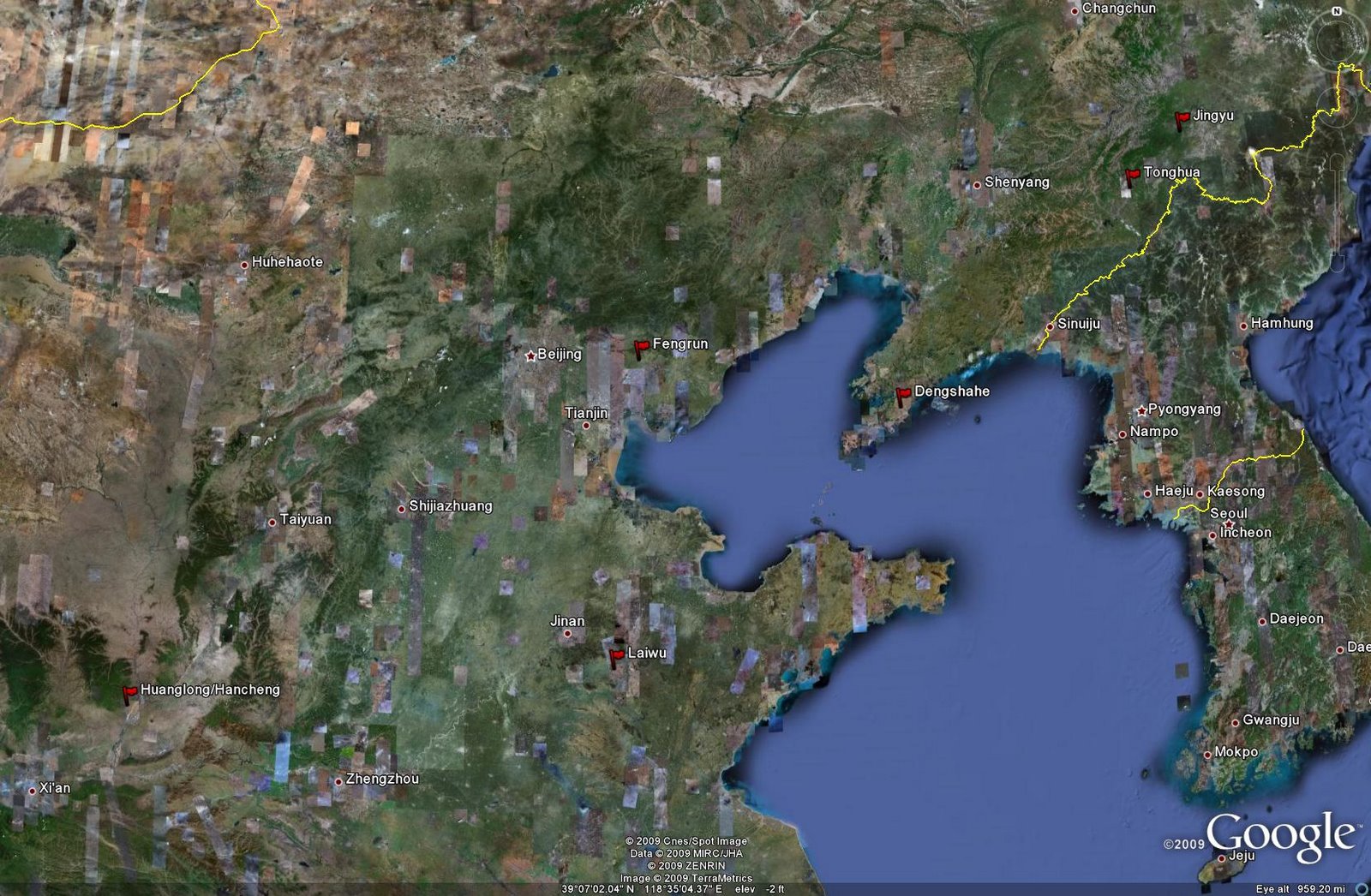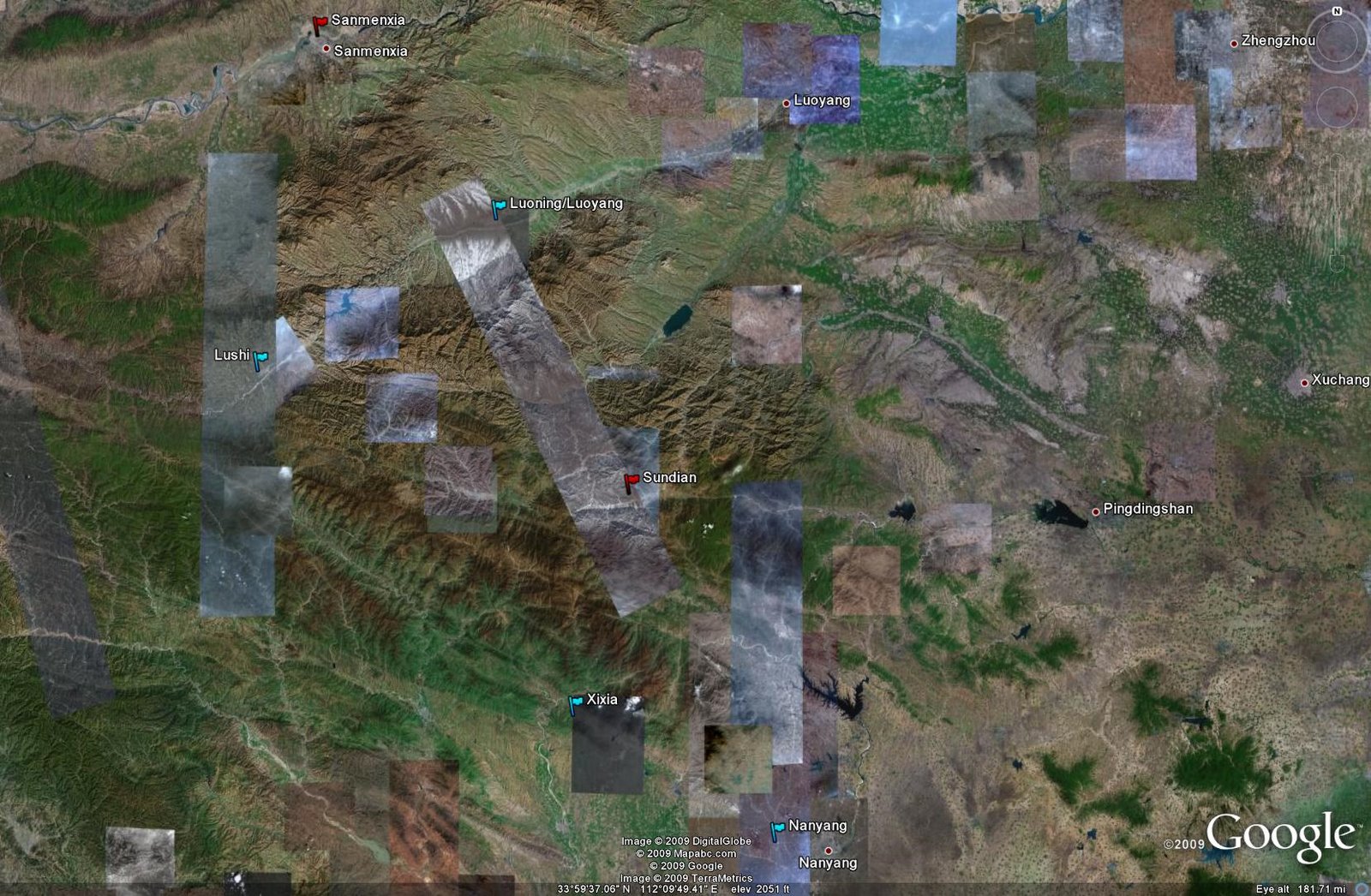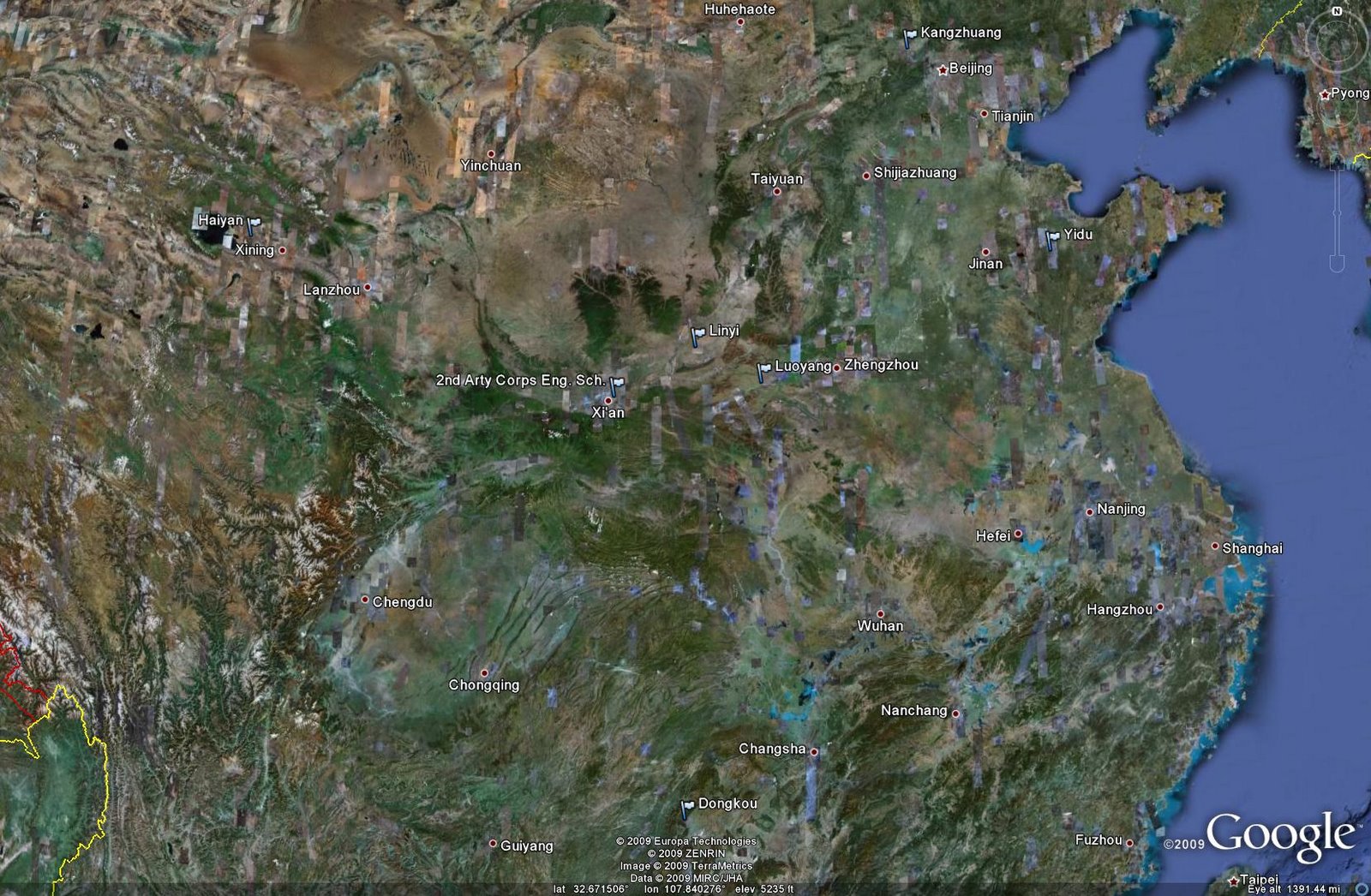|
PLA Second Artillery Corps
|
Technical Report
APA-TR-2009-1204
Sean O'Connor, BA,
MS (AMU)
December 2009
Updated April, 2012
Text
©
2009 Sean
O'Connor
Layout, Line
Artwork ©
2009 Carlo Kopp

|
|
Second Artillery Corps DF-21C
TEL during rehearsals for
the 60th Anniversary PLA parade.
|
|
|
Background -
China's Missile Force
China possesses one of the largest
land-based missile forces
in the world. While intercontinental ballistic missile parity with the
US or the USSR was
never one of the goals of the PLA during the Cold War, a rapidly
modernizing 2nd Artillery Corps is becoming a far more
viable
international deterrent force in the current world. Capable of
inundating the region surrounding China with hundreds, if not
thousands, of conventional and nuclear armed missiles, the PLA's 2nd
Artillery Corps deserves credit and recognition as one of the most
devastating military branches found in any military worldwide.
The Chinese land-based ballistic and cruise missile force
comprises 38 operational missile units spread throughout the nation.
The force is heavily oriented towards mobile short and theater range
systems, with only eight facilities supporting ICBMs. The locations of
the PLA's operational missile units can be seen in the image below:
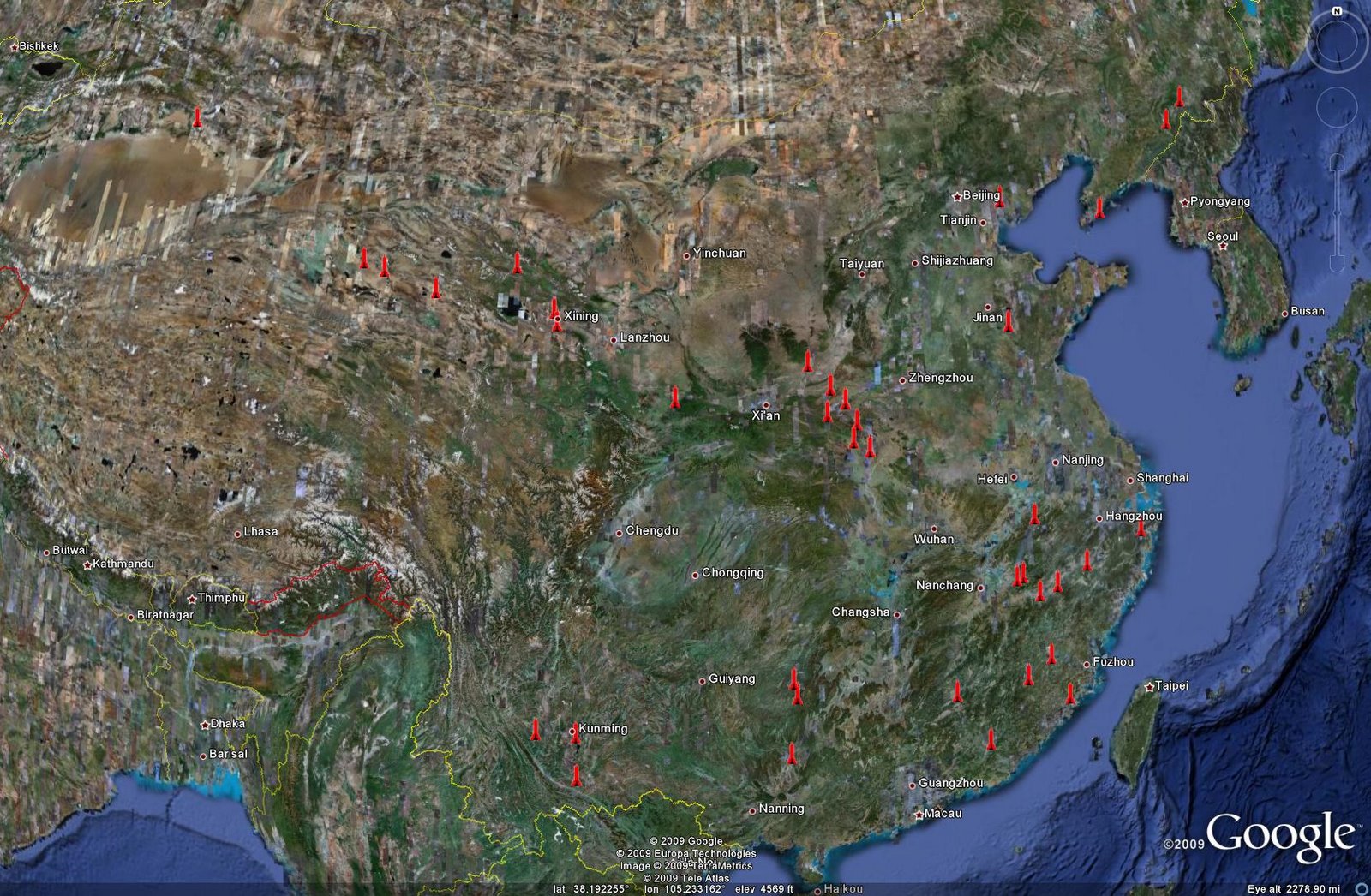
|
Second
Artillery Corps - General Deployment
The 2nd Artillery Corps of
the People's Liberation Army
controls
China's land-based missile forces. The 2nd Artillery Corps
is responsible for both
ballistic and cruise missiles, with varying ranges and differing
payloads. With the introduction of new conventionally armed ballistic
missiles and the new CJ-10 GLCM, the 2nd Artillery Corps
should not merely be considered
a nuclear missile force.
The 2nd Artillery Corps headquarters is located north of
Beijing,
directly south of the 2nd Artillery Corp's research and
development complex, as
seen in the image below. An alternate HQ is likely found in the
hardened underground launch control facility located beneath
Yuquanshan Mountain to the west.
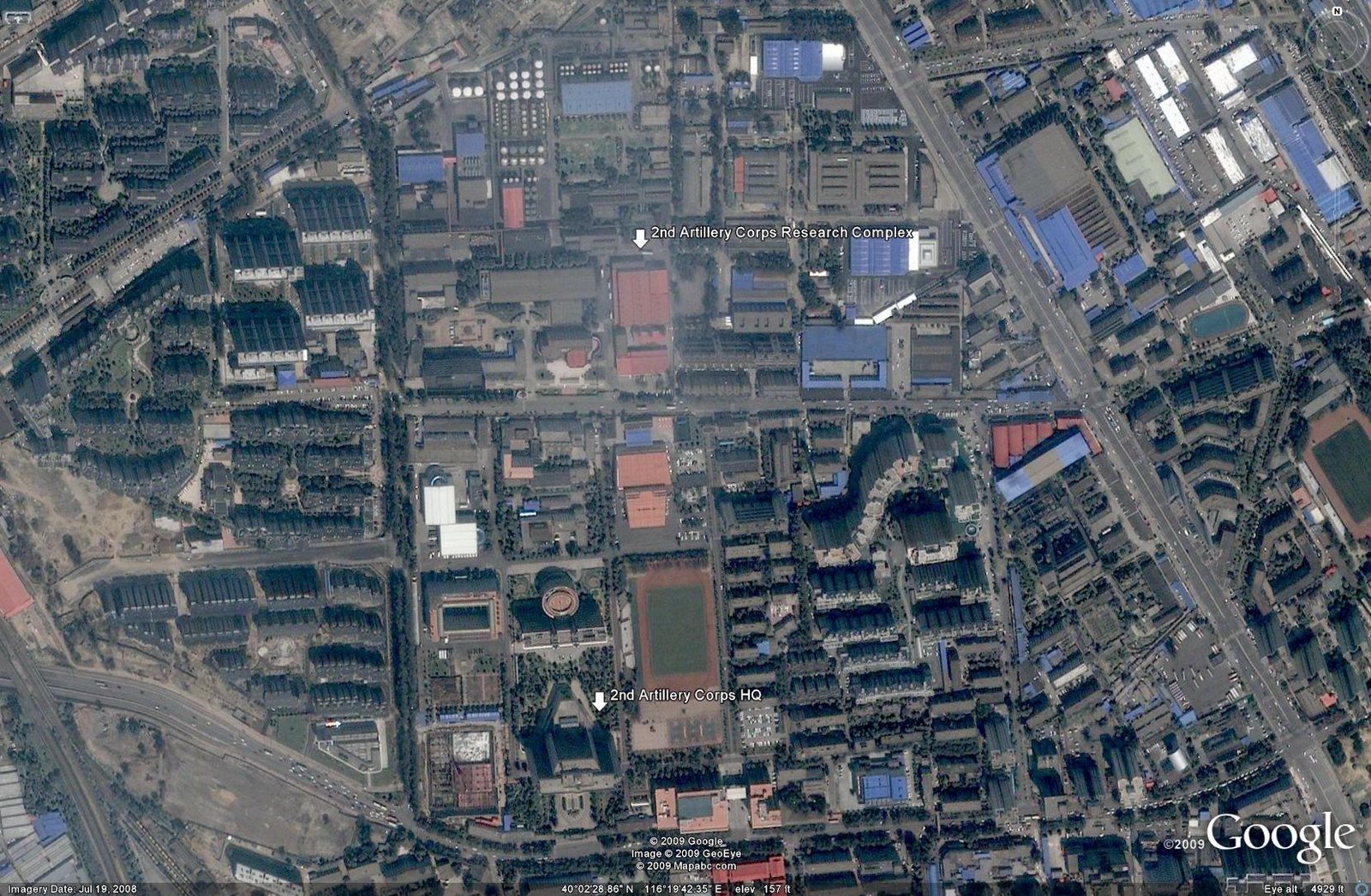
Second Artillery
Corps
missile
units are organized into what the PLA refers to
as “bases”. There are six bases, each located in a different
geographical area. Described in the terms used by the Russian military,
these bases are analogous to Russia's “Missile Armies”. Each base has
numerous subordinate missile brigades, with each brigade maintaining
one or more garrisons, various underground facilities (UGFs), rail
transfer points, and field launch positions.
Missile garrisons are not difficult to identify once their location can
be narrowed to a certain geographical area. These facilities will
typically contain administrative and support infrastructure for
assigned personnel, and various garages for housing missile TELs and
support equipment. Garrisons supporting field deployable systems such
as the DF-21 or DF-31 will typically possess high-bay garages or other
similar structures used for the assembly and checkout of system
components.
Rail transfer points are not typically easy to identify with any
certainty, unless missile equipment is visible at the railyard.
However,
the likely rail transfer points are those railyards in closest
proximity via roadway or connecting railspur to the missile garrisons.
Ergo, these facilities have been marked as the likely rail transfer
points.
Identifying field launch sites for the 2nd Artillery Corps'
missile force can be a
difficult proposition, and there are likely hundreds of such locations
as yet unlocated. Careful analysis can be used to identify likely
locations, however. The majority of these positions will contain a
hardened concrete pad where the associated missile will be erected for
launch. Certain missile systems will typically have very similar or
even identical launch positions. Usually, it appears that most units
within a given base will adopt a similar launch site design for a given
missile type, although this is not uniform.
Typical launch site dimensions for common used systems are as follows:
- DF-11: 15 meters in length
- DF-15: 26 meters in length
- DF-21: 45 meters in length
As a comparison, consider the following image. DF-21 launch positions
from the 51st and 56th Bases are depicted. Note
the similarity to the
Datong and Delingha sites. The Huanglong and Liuqingkao examples depict
identical dimensions but different, more concealed configurations. Such
concealment efforts can make launch sites difficult to identify without
considerable examination and are often employed by units in areas which
are more likely to be potentially engaged.
Knowing the dimensions or configuration of a given launch site for a
specific missile type allows analysts to determine which sites in a
mixed garrison are employed by which missile systems. Shangrao's 815th
Brigade, for example, employs both the DF-11 and DF-15. Given that both
missiles utilize dimensionally different launch positions due to the
different size of the launch vehicles, an examination of the launch
sites near Shangrao will provide an indication of which sites will be
used by which missile system. Once this is determined, a more accurate
assessment of the strength of the unit may also be made. These are
standard practices when analyzing missile units through overhead
imagery.
Nearly every missile brigade is located in close proximity to one or
more hardened UGFs. It is thought that these facilities may provide
staging areas for missile systems which have left garrison.
Alternatively, they could provide storage for missiles and/or warheads,
as these are not likely to be kept on TELs in-garrison indefinitely.
These facilities may also serve a purpose unrelated to the 2nd
Artillery Corps, but are included nonetheless as their true purpose
cannot be accurately determined. It is known that UGFs support aspects
of the 2nd Artillery Corps, and the included facilities
represent the
most likely locations operating in support of nearby missile units.
For a representative brigade layout, consider again the 815th
Brigade
at Shangrao. The following image depicts the locations of the garrison,
three identified UGFs, and twelve identified launch sites for the
assigned DF-11 and DF-15 missiles. Note the relatively linear
progression from garrison to UGF to launch site. A TEL could leave the
garrison during hostilities and travel to a UGF for either arming or to
await a launch order. Once ordered, the TEL could then proceed to a
launch point, all with a minimum of exposure.
The icons used above are used throughout this article and are present
in the associated downloadable file. The only alteration is that ICBM
units are marked on the images of each Base's associated sites with
blue flags instead of red flags. This allows the reader to
differentiate between theater and intercontinental assets with ease.
|
51ST
BASE
The 51st Base consists of
six missile units in northeastern
China.
These units are as follows:
- 806th Brigade, DF-21, Huanglong/Hancheng
- 810th Brigade, DF-3A and DF-21, Dengshahe
- 816th Brigade, DF-15, Tonghua
- 822nd Brigade, DF-21, Laiwu
- U/I Brigade, U/I missile, Fengrun
- U/I Brigade, U/I missile, Jingyu
The locations of these units can be seen in the following image:
Some sources
claim that the 816th Brigade is equipped with the DF-21.
52ND
BASE
The 52nd Base consists of
twelve missile units in
southeastern China.
These units are as follows:
- 807th and 811th Brigades, DF-3A and
DF-15,
Lianxiwang/Jingdezhen
- 815th Brigade, DF-15C, Leping
- 815th Brigade, DF-11 and DF-15, Shangrao
- 815th Brigade, DF-15, Xindian
- 817th Brigade, DF-11A, Yong An
- 818th Brigade, DF-15, Meizhou
- 819th Brigade, DF-15, Gangzhou
- 820th Brigade, DF-15, Jinhua
- U/I Brigade, DF-11 and DF-15, Jiangshan
- U/I Brigade, DF-15, Nanping
- U/I Brigade, DF-11A, Xianyou
- U/I Brigade, U/I missile, Ningbo
The locations of these units can be seen in the following image:
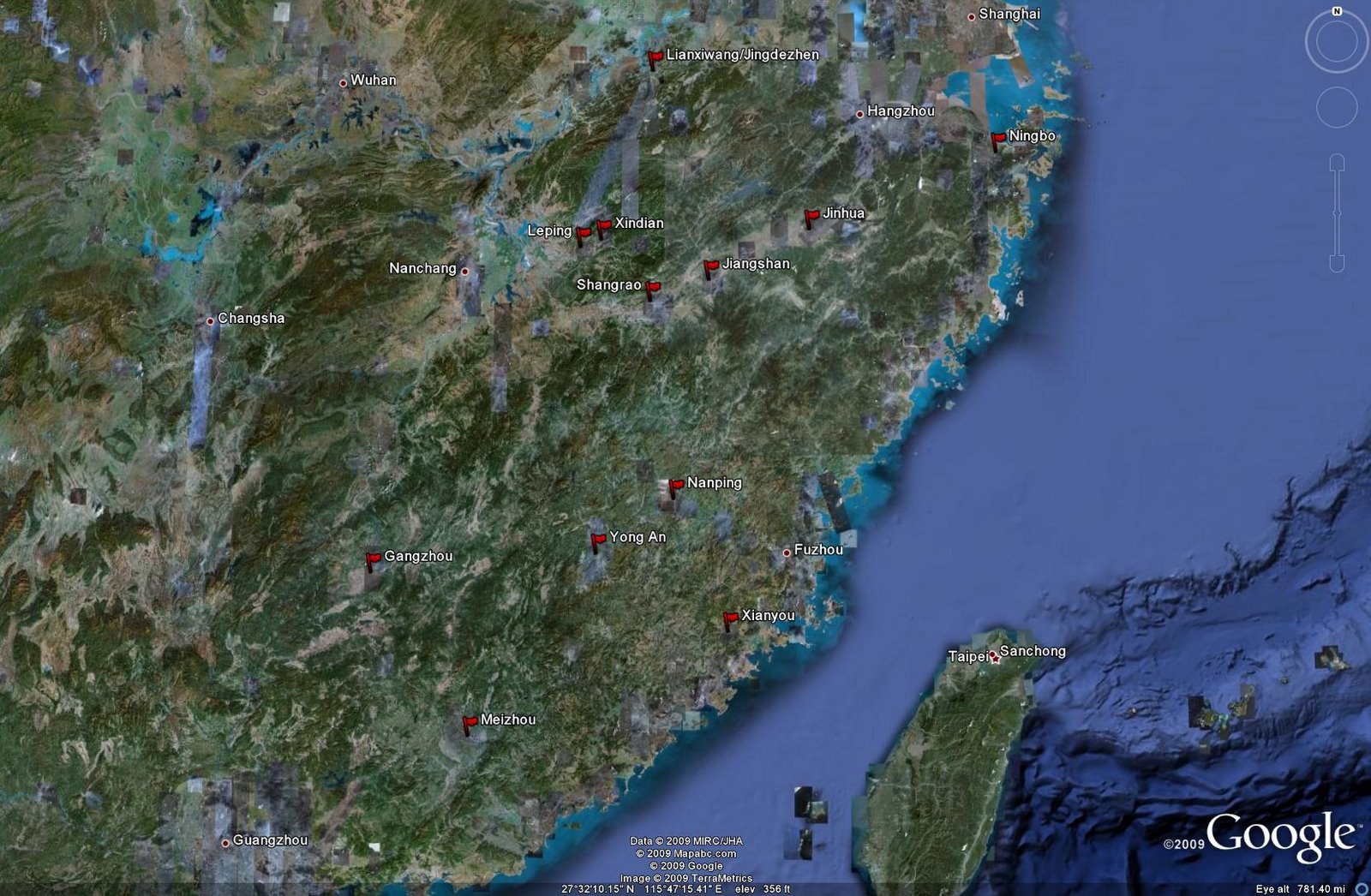
The
807th
Brigade,
reportedly located at Chizhou, is likely co-located with
the 811th Brigade at Lianxiwang/Jingdezhen. DF-3A missiles
associated
with these units may have been replaced by DF-21s, according to some
sources.
53RD
BASE
The 53rd Base consists of
four missile units in southern
China. These
units are as follows:
- 802nd Brigade, DF-21, Jianshui
- 802nd Brigade, DF-21, Kunming
- 808th Brigade, DF-21, Chuxiong
- 821st Brigade, CJ-10, Luorong
The locations of these units can be seen in the following image:
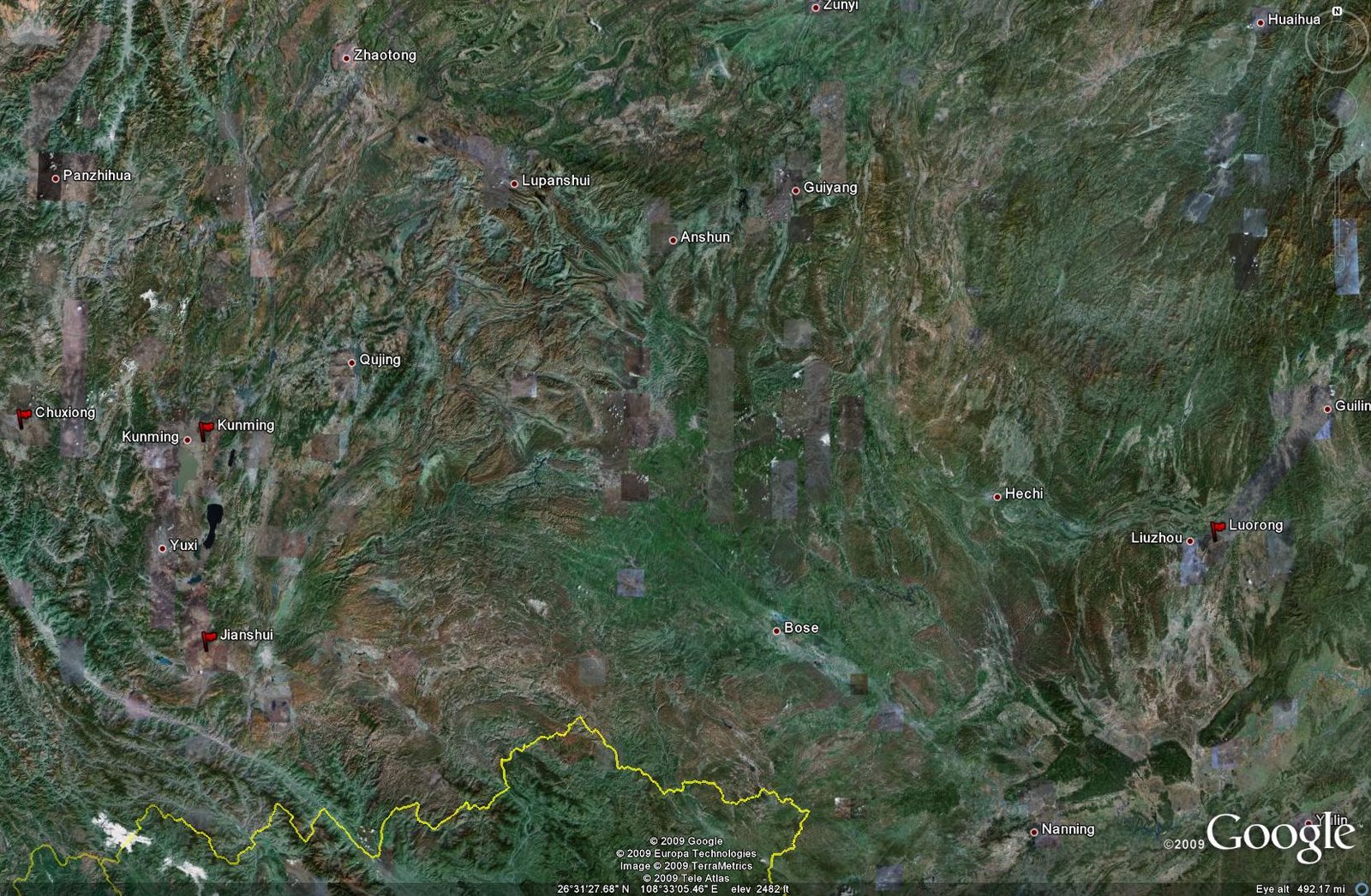
54TH
BASE
The 54th Base consists of six missile
units in eastern China. These
units are as follows:
- 801st Brigade, DF-5A, Lushi
- 804th Brigade, DF-5A, Luoning/Luoyang
- 813th Brigade, DF-31, Nanyang
- U/I Brigade, DF-4, Sundian
- U/I Brigade, DF-31, Xixia
- U/I Brigade, U/I missile, Sanmenxia
The locations of these units can be seen in the following image:
Launch sites located near Xixia, once
thought
to
serve
the 813th Brigade at Nanyang, may support a separate DF-31
or DF-31A
unit. Garrison facilities have not been identified, but the different
launch site style may be indicative of a separate unit.
55TH
BASE
The 55th Base consists of
two missile units in southern
China. These
units are as follows:
- 803rd and 814th Brigades, DF-5A,
Jingxian
- 805th Brigade, DF-4, Tongdao
The locations of these units can be seen in the following image:
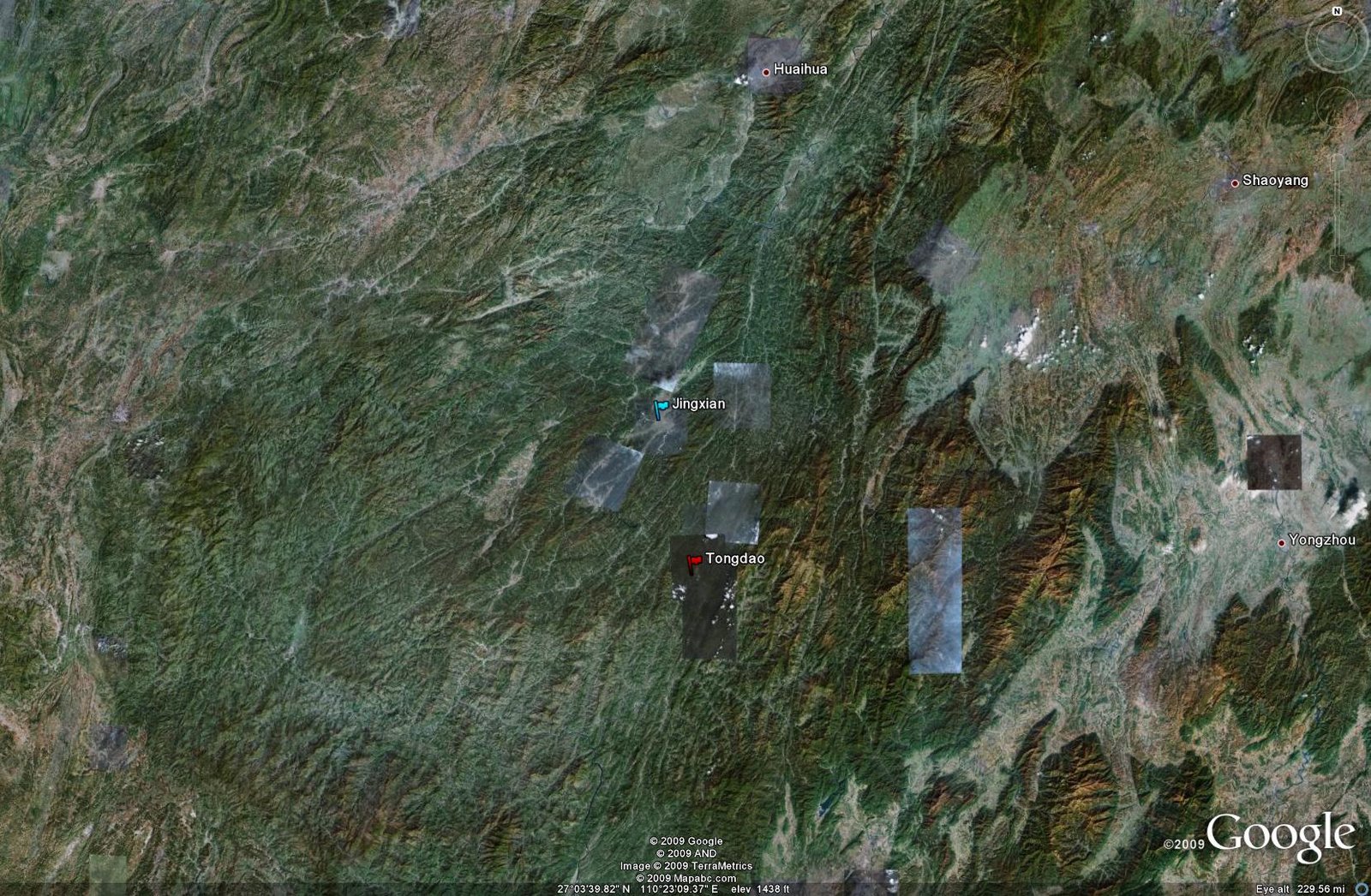
The
803rd
and
814th Brigades are both found in close proximity and may
share some of the garrison and support facilities located nearby.
Dongkou, often claimed to be home to the 55th Base's 824th
Brigade, is
in actuality a training facility and is not included as part of the
55th Base.
56TH
BASE
The 56th Base consists of
eight missile units in northern
China. These
units are as follows:
- 809th Brigade, DF-21, Datong
- 812th Brigade, DF-31A, Beidao/Tawanli
- 823rd Brigade, DF-21, Korla
- U/I Brigade, DF-11 and DF-15, Da Qaidam
- U/I Brigade, DF-4, DF-11, DF-15, DF-21, and DF-31, Delingha
- U/I Brigade, DF-21, Liuqingkou
- U/I Brigade, DF-11 and DF-15, Mahai
- U/I Brigade, DF-21 and DF-31, Xining
The locations of these units can be seen in the following image:
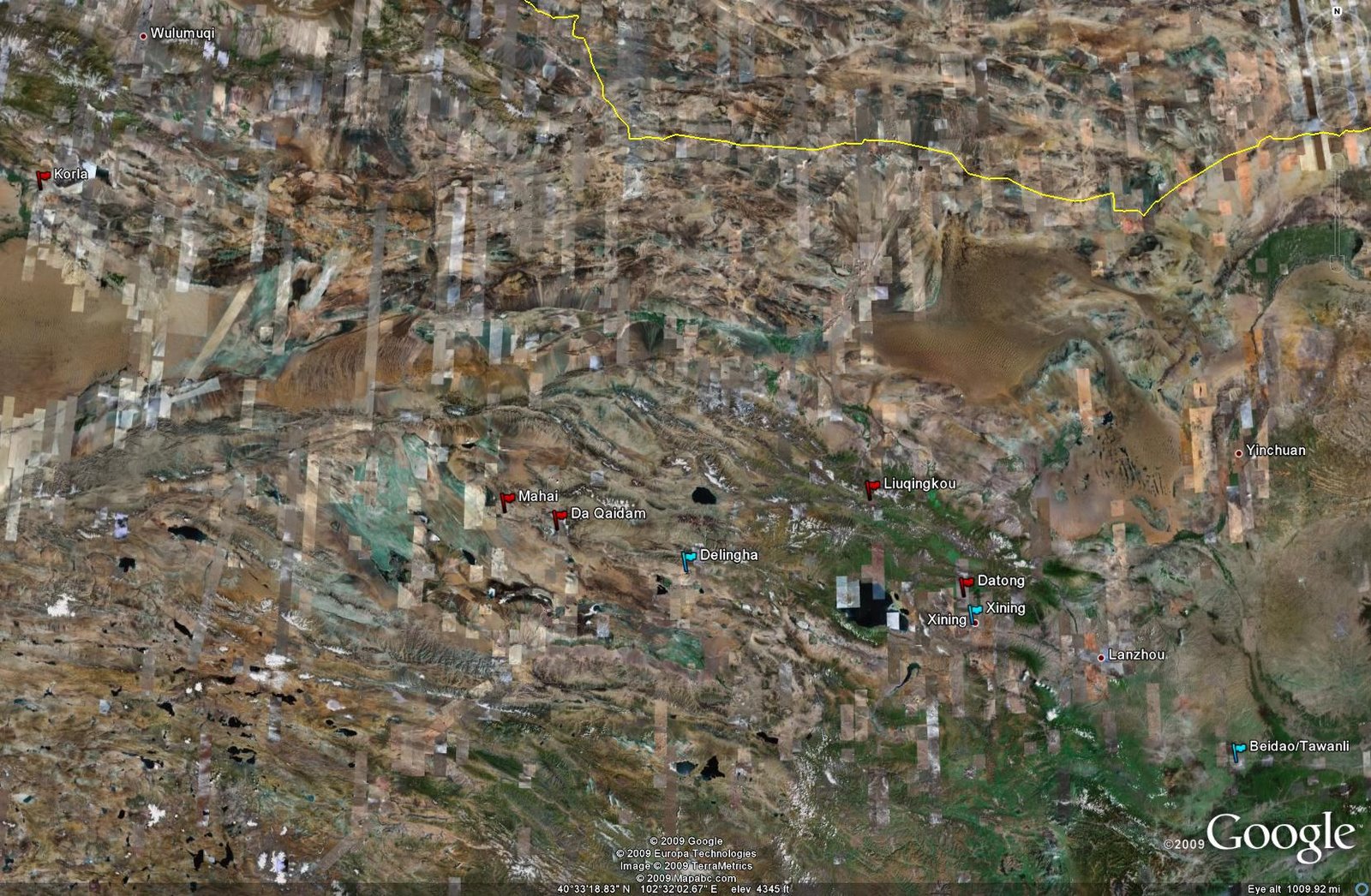
The
Delingha
brigade
is often referred to as a training unit. This may be
the case, but it is included here as it is far more expansive than
typical ballistic missile training fields. It is likely home to
operational units, even if the facilities are also employed for
training purposes. The 812th Brigade is often erroneously
referred to
as being based at Tianshui when in actuality the main garrison
facilities are located east of Tianshui at Beidao.
|
Training
Facilities
Seven
facilities provide classroom and field training for 2nd
Artillery Corps
personnel. Six facilities are garrisons or launch areas providing
hands-on training and missile launch capabilities. The seventh facility
is the 2nd Artillery Corps Engineering School in Xian. The
locations
and identifications of the 2nd Artillery Corps' training
facilities can
be seen in the image below:
Many
of
the
training facilities do not provide significant garrison areas,
implying that they are manned by deployed units who arrive with their
own equipment. This does not imply that crew training is not conducted
at home garrison, but rather that a capability to field deploy and
conduct training launches is available within the 2nd
Artillery Corps.
This is similar to the presence of dedicated training facilities for
PLAAF SAM units. Such a layout also allows locations to be identified
as training rather than operational garrisons.
A representative
training facility can be found at Linyi. This facility houses numerous
training launch pads and minimal support facilities. It can be seen in
the image below:
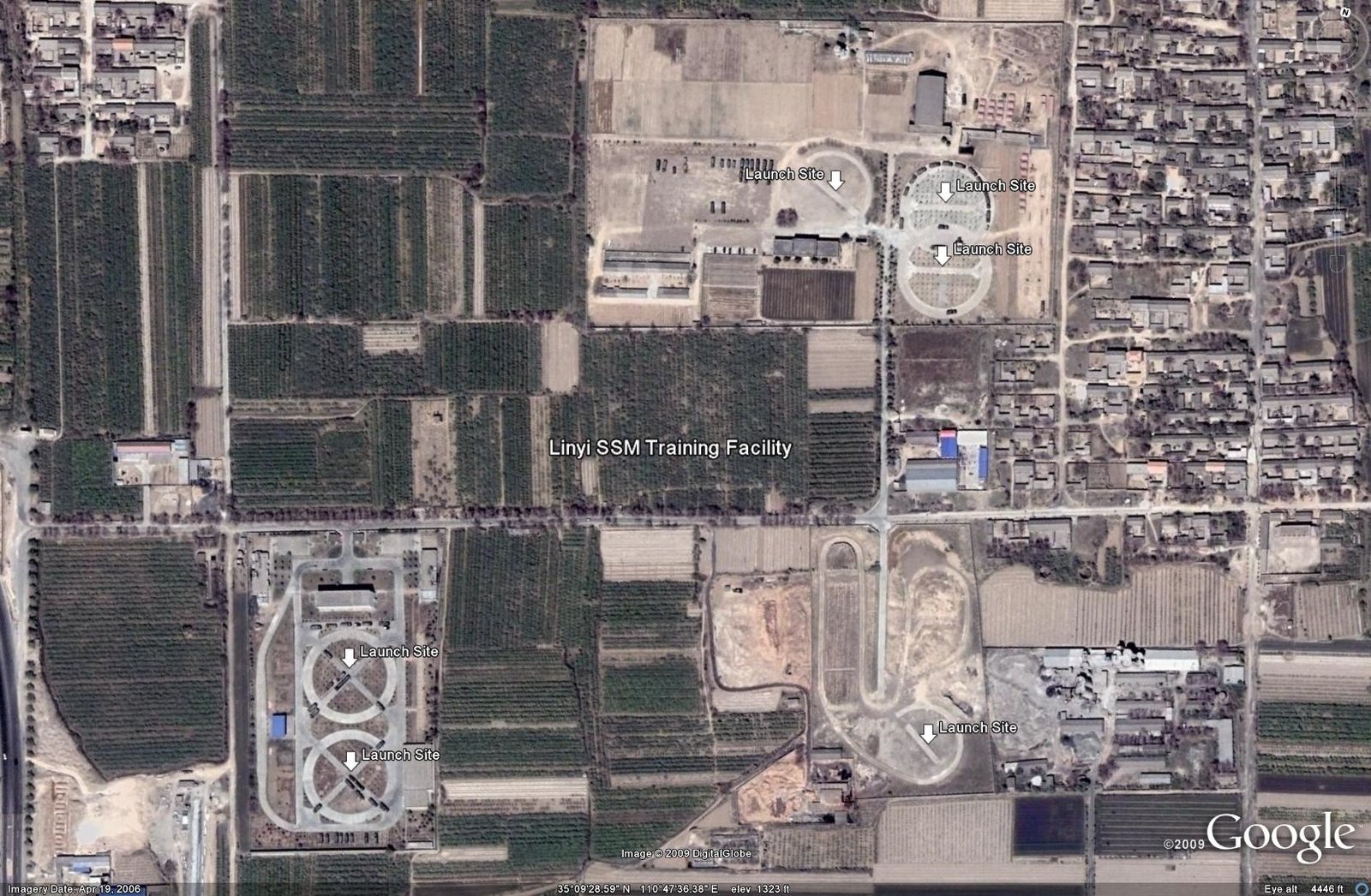
Two
of
the
training facilities provide crew training on the DF-5A missile
system. These two facilities, at Dongkou and Luoyang, are fitted with
missile silos to provide a realistic training environment. Not only are
crews theoretically able to undergo certification or training on launch
procedures, but the presence of realistic silos allows maintenance
personnel to effectively train on operational tasks such as silo
reloading and in-silo missile servicing. This is a significant training
capability to possess; with DF-5A ICBM silos in relatively short
supply, training can be conducted without affecting the operational
status of the primary Chinese strategic deterrent force.
|
Test
Facilities
Seven
test facilities support the development and testing of ballistic
missiles in China. Six of these locations are equipped with facilities
to launch various types of ballistic missiles. The seventh facility is
an impact range equipped with mock targets used to assess missile
accuracy. The locations and identifications of the 2nd
Artillery Corps'
test facilities can be seen in the image below:
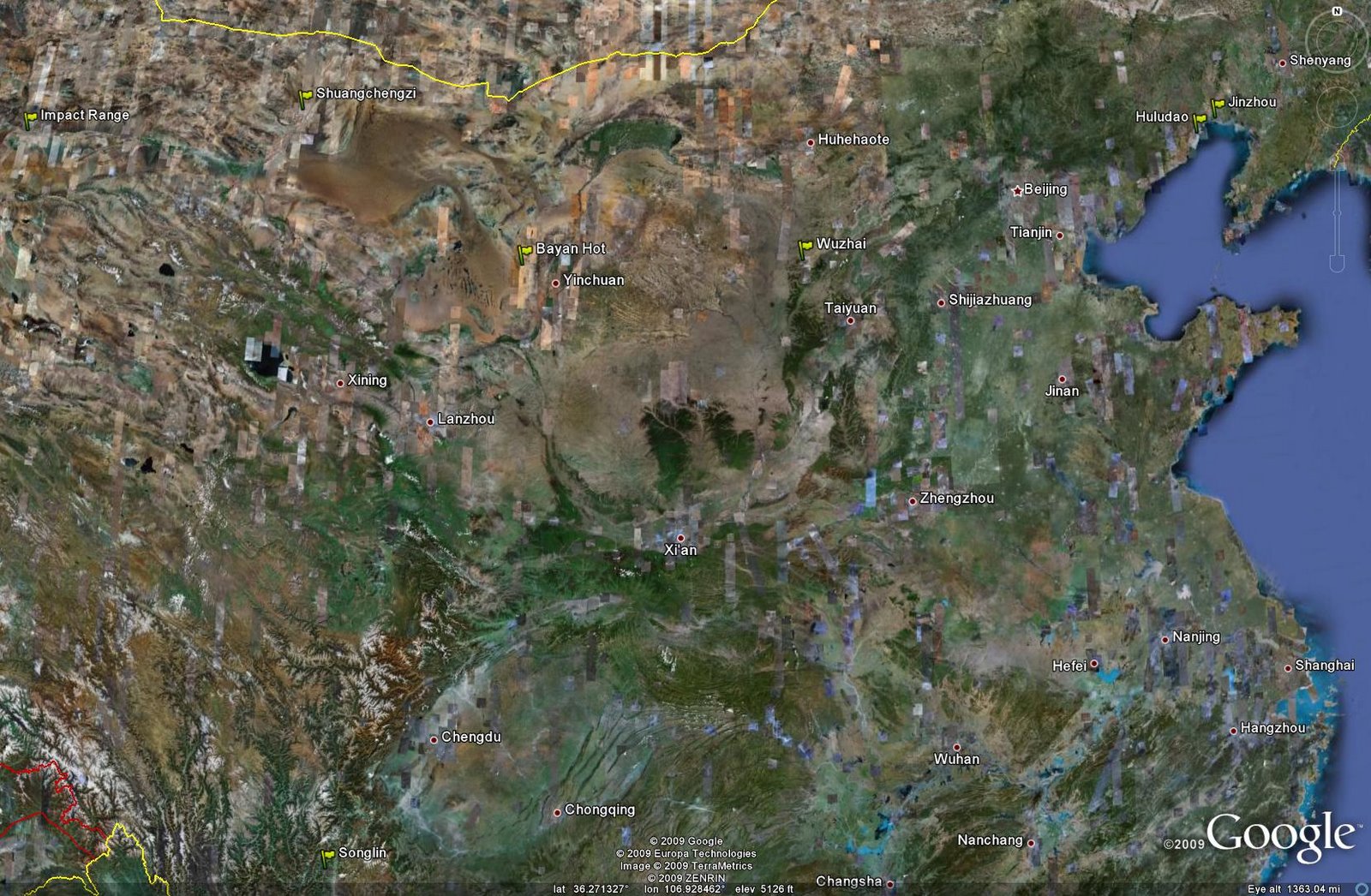
The
two
primary
ballistic missile test facilities are at Wuzhai and
Shuangchengzi. These facilities contain multiple launch positions and
support facilities, allowing for large-scale development programs to be
conducted at each site. Wuzhai is considerably larger and is likely the
primary ICBM test facility. It is the only test facility to be
outfitted with a DF-5 series silo for trials launches, and has been
cited in the open press as the launch site for DF-31 and DF-31A trials.
Shuangchengzi, therefore, is likely primarily tasked with supporting
SRBM/MRBM/IRBM development programs, although there is no reason why
any type of missile could not be fired from either location.
Four
other facilities, located at Bayan Hot, Huludao, Jinzhou, and Songlin,
are also available for test launches. The Songlin site is noteworthy as
it supports the development of China's ASAT missile. This location
fired the SC-19 ASAT weapon used to destroy an orbiting satellite in
January of 2007.
Apart from the six launch facilities supporting
missile testing, an impact zone located 100km northwest of Dunhuang
provides targets for weapons fired in test and training launches. Close
examination of this facility proves to be very revealing. The facility
consists of five primary targets, seen in the image below. These
targets consist of three mock airstrips and two concrete pads.
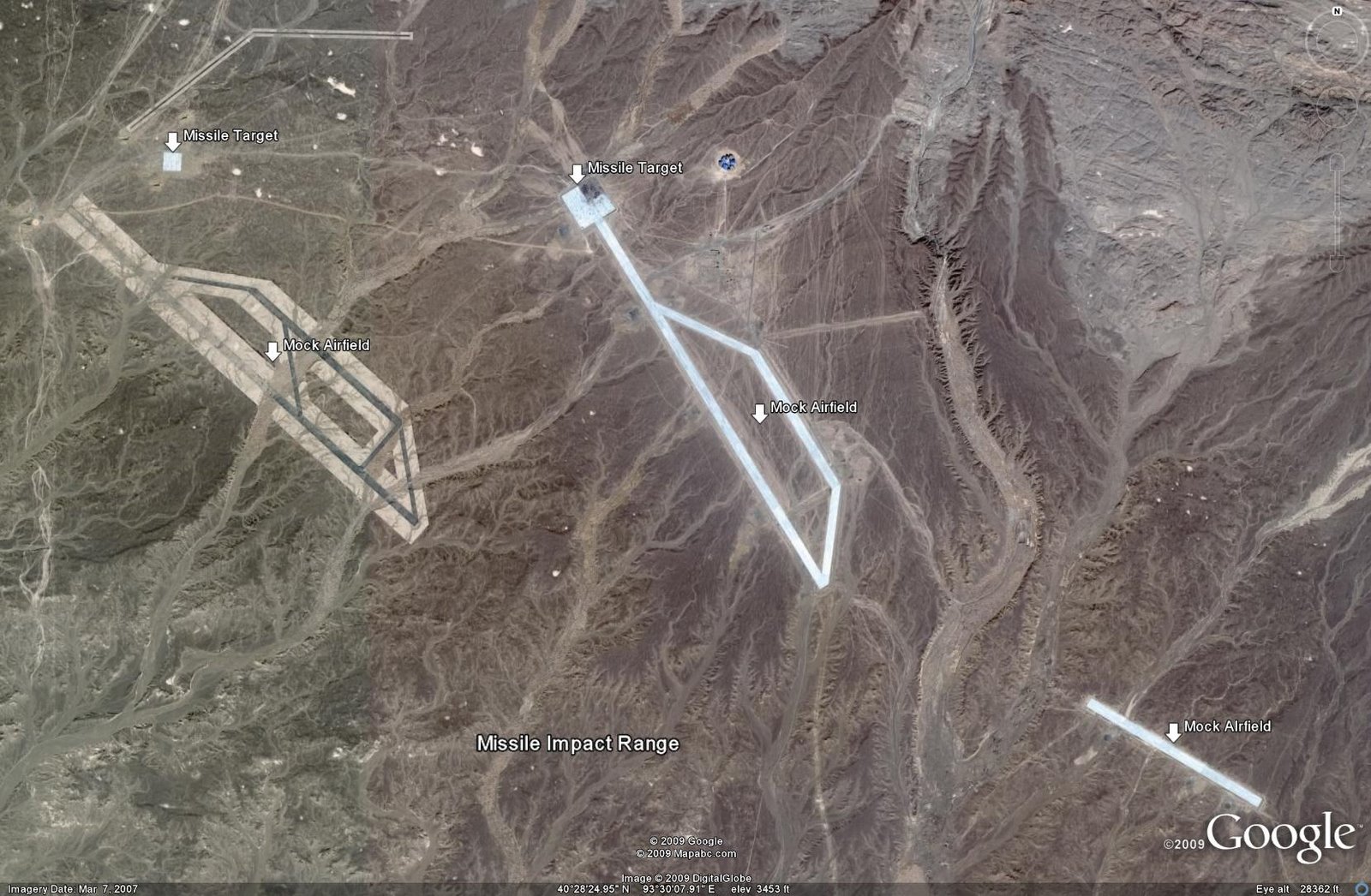
The
concrete
pads
provide a great deal of insight into Chinese warhead
development. Both the small western pad, measuring 115 meters by 115
meters, and the large eastern pad, measuring 250 meters by 250 meters,
show considerable evidence of submunitions impacts, implying that
submunitions warheads have been actively tested. The eastern pad was
untouched as of May 2005, but began to show evidence of submunitions
impacts in September 2006 imagery. By March of 2007 the eastern pad
showed evidence of large HE warhead strikes.
The eastern pad
is significant as it is divided into four 150 meter by 150 meter
sections, allowing for missile accuracy to be measured accurately. All
of the HE warhead impacts are contained within the northeastern
section. The characteristics of the impacts themselves suggests that
they were all made by the same type of warhead. While it is possible
that this represents evidence of an MRV-equipped missile test, possibly
that of the DF-21C, it cannot be conclusively determined if the impacts
were made during the same test using the available imagery. As the
weapons all impacted in the same segment of the pad, it does allow for
an assessment of the accuracy of the launch platform to be made.
Details of the eastern impact pad can be seen in the image below:
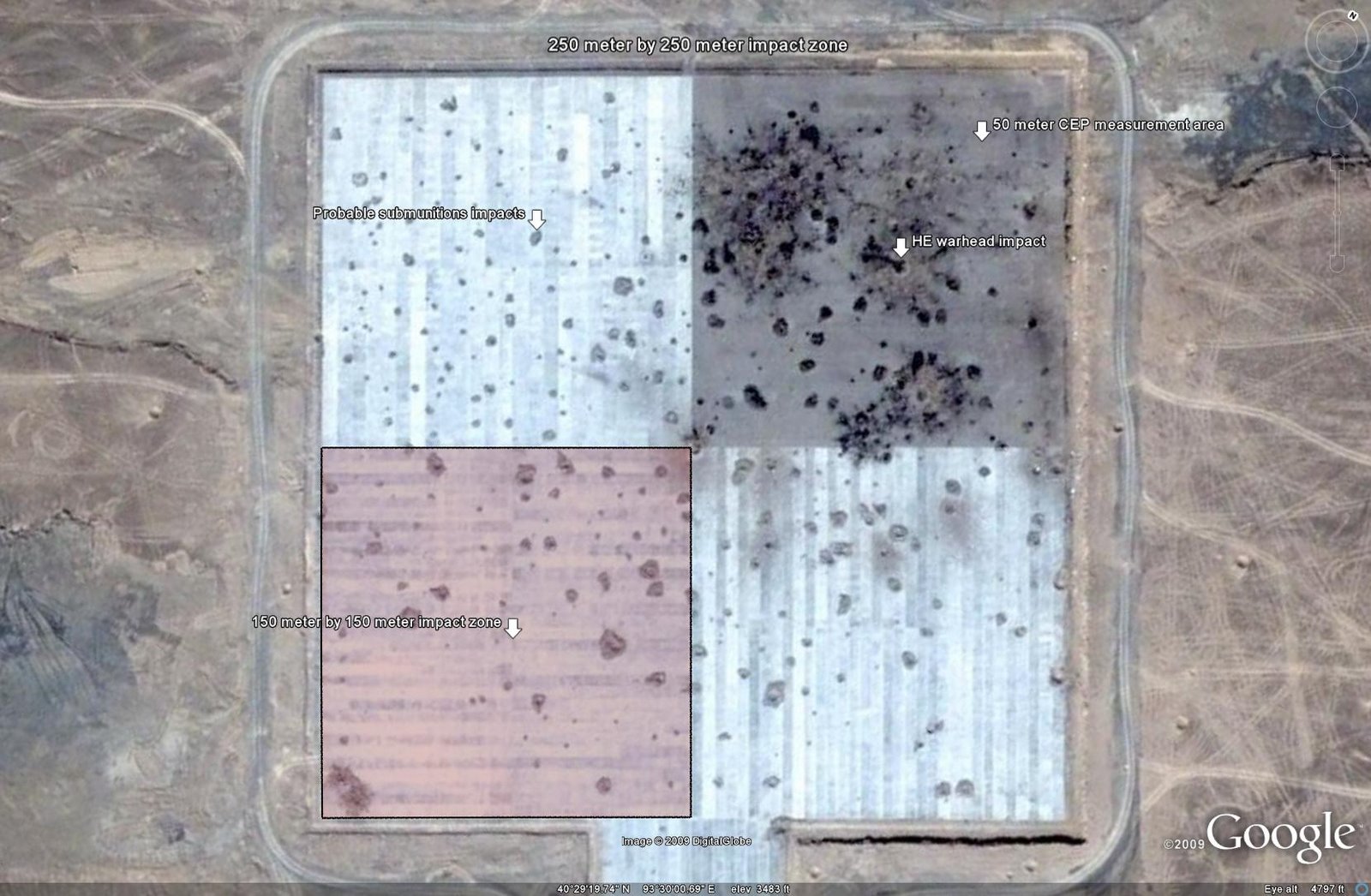
All
of
the
impacts can be contained within a circle having a 100 meter
radius. This indicates that the CEP of the weapon is approximately 50
meters. Given the fact that the target site is 580 kilometers from
Shuangchengzi, it is possible that a DF-15C test series resulted in the
HE impacts on the pad. The DF-15C is reported to have a 600 kilometer
range and terminal homing. The inclusion of a dual GPS and active radar
terminal homing system on the DF-15C allows for an accuracy reportedly
between 30 and 50 meters CEP, matching what is visible at the impact
site. The integration of terminal homing with conventional warheads of
high accuracy provides more credibility to the Chinese ASBM threat as
well as indicating that accuracte, conventionally armed ballistic
missiles may be more likely to be employed in a conflict than previous
nuclear-only weapons. In a conventional conflict this could result in a
significant increase in the number of ballistic missiles fired at
targets, potentially allowing any ATBM or ABM systems in the area to be
oversaturated.
|
Development
and
Production
The
development and production of ballistic and cruise missiles in China
involves numerous different facilities throughout the nation. These
facilities can be seen in the image below:
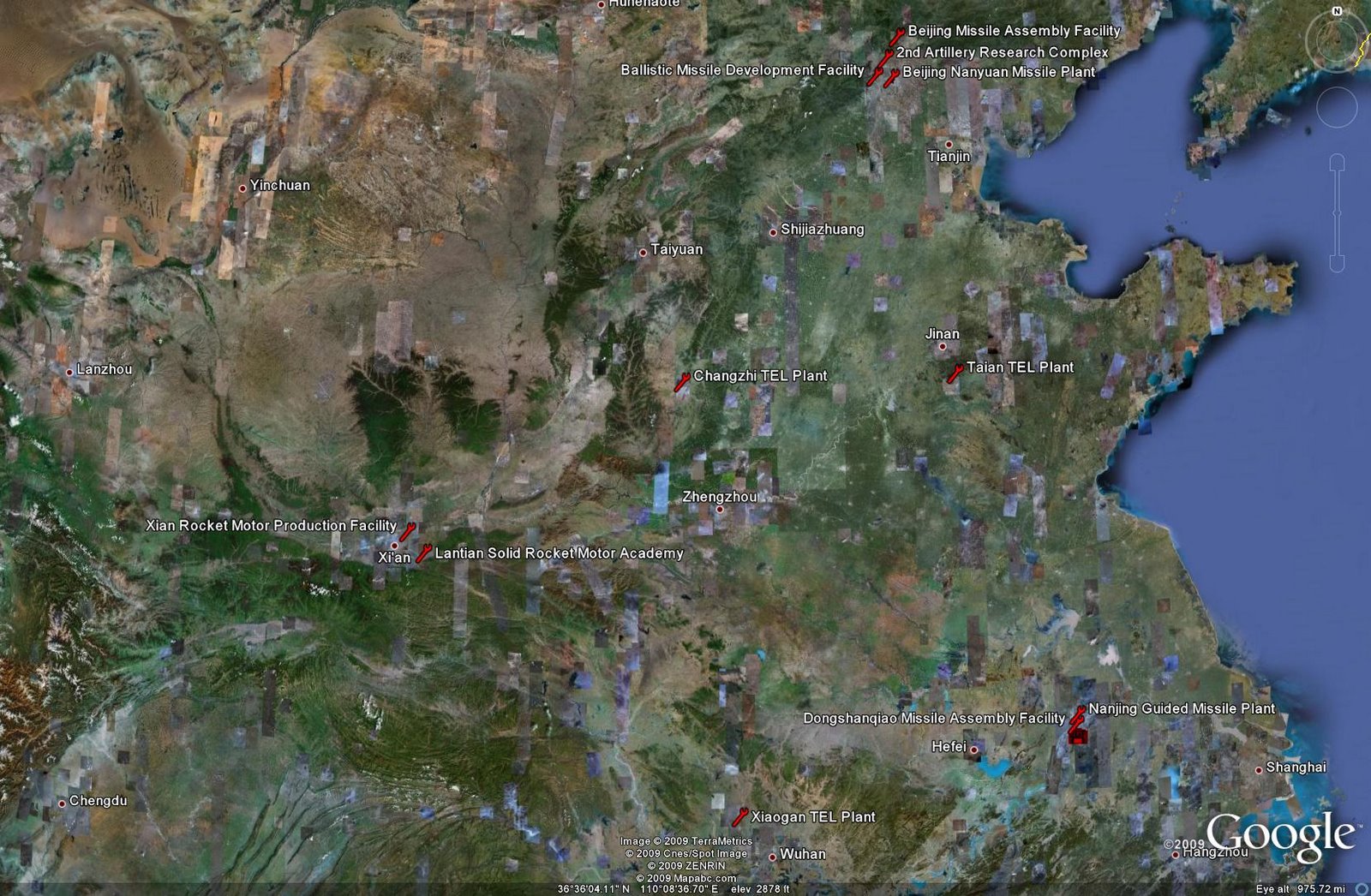
Missile
final
assembly
is
conducted at one of the missile plants or assembly
facilities. Solid propellant motors are produced by the facilities near
Xian, with the Lantian Solid Rocket Motor Academy being responsible for
their design and development. The Chinese Academy of Launch Vehicle
Technology is responsible for liquid propellant motors, and the marked
“Ballistic Missile Development Facility” may be CALT's main test
facility, although this has yet to be verified. TELs are produced by
three factories, and may be produced at the Beijing Nanyuan facility as
well.
|
Nuclear
Weapons Industry
Little is
known about the actual design and production of Chinese nuclear
weapons. Five facilities have been identified that have a known
nuclear-related purpose. They are as follows:
- CIAE Nuclear Research Complex, Tuoli
- 404 Plutonium Production Plant, Jiuquan
- 504 Uranium Gasseous Diffusion Plant, Lanzhou
- 821 Plutonium Production Plant, Guangyuan
- Lop Nur Nuclear Test Site
These facilities are annotated on the image below:
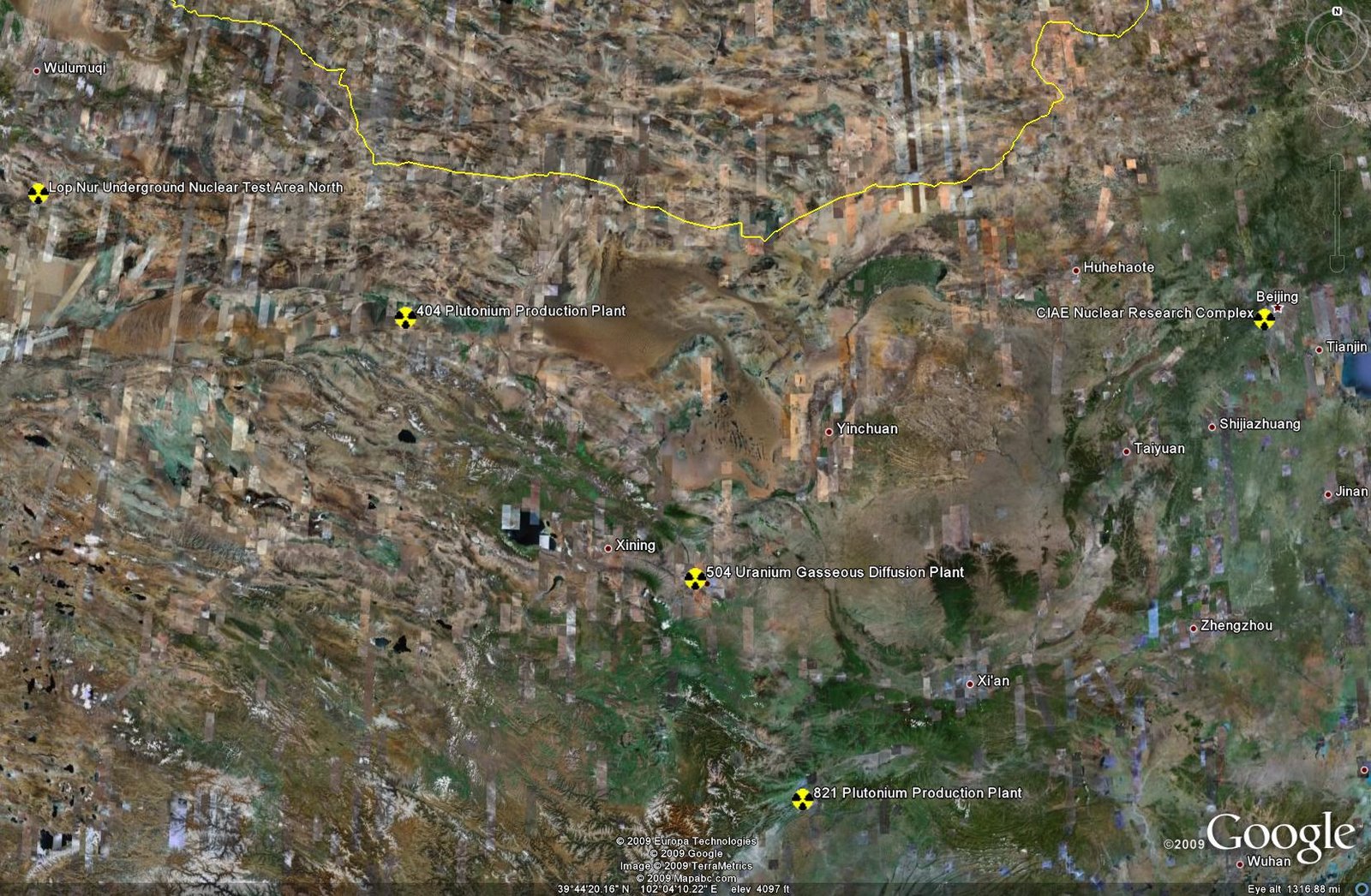
While
these
facilities
may have civillian nuclear power and research
purposes, their nature indicates that they may also serve the Chinese
nuclear weapons industry. Lop Nur is well known as the test site for
Chinese nuclear weapons, and the three plants annotated above could be
used to produce weapons-grade fissile material.
|
Operational
Employment
During
wartime, control over the 2nd Artillery Corps' missile
brigades differs depending on their payload. Units fielding nuclear
armed weapons, most notably
the ICBM brigades, report directly to the Chinese national command
center west of Beijing. Conventionally armed brigades are treated
differently. A regional command cell, called a “war front” command,
would assume control of relevant conventionally-armed ballistic missile
units as part of a conventional missile corps. This missile corps would
be subordinate to the war front command, acting as part of a total
force package consisting of air, land, sea, and missile elements.
Beijing's leadership and 2nd Artillery Corps commanders
would be able
to communicate directly with the war front command, and would retain
the ability to directly control assigned missile brigades should the
need arise or the situation warrant it. At the brigade level,
individual firing battalions would be assigned operating areas
consisting of presurveyed and/or prepared launch positions.
As
previously mentioned, it is likely that the garrisoned TELs are not
kept uploaded with missiles and armed with warheads. Inside a missile
brigade's force structure, there are six departments: headquarters,
political, logistics, technical and equipment, missile storage, and
launch battalions. These are present in both conventional and nuclear
missile brigades. The missile storage department consists of a central
depot, and a missile/warhead transfer section. This implies that there
is a storage facility for the missiles and warheads, or perhaps
separate facilities for each. No garrison facility possesses the
secure, hardened facilities needed to adequately store and protect
these assets, so it must be assumed that they are located off-site. The
logical assumption is that the vast network of UGFs located near the
missile garrisons and launch sites are used to protect, store, and
transfer these items. Storing warheads and missiles in UGFs allows TELs
to be loaded and armed under protected cover, and away from the prying
eyes of intelligence satellites attempting to gauge force readiness.
This also allows the garrisons themselves to be situated in or near
large population centers, as most of them are, without fear of any
accident or incident leading to a catastrophe.
Apart from the
ICBM force, which at present only provides a token deterrent lacking in
any sort of credible counterforce or counterstrike capability, the 2nd
Artillery Corps is equipped primarily for a regional mission. The most
significant unit is the 52nd Base, controlling the weapons
directed
across the strait at the Taiwan Authority on the island of Taiwan. The
twelve units of the 52nd Base control a large number of
DF-3A, DF-11,
DF-11A, DF-15, and DF-15C ballistic missiles. Apart from the DF-3A
which can range far out into the Pacific Ocean, the remaining missile
forces have sufficient range to blanket the island of Taiwan without
venturing far from their garrisons.
The following image depicts
2nd Artillery Corps ballistic missile coverage of the island
of Taiwan.
DF-11 range rings are orange, DF-11A range rings are yellow, and
DF-15/DF-15C range rings are red.
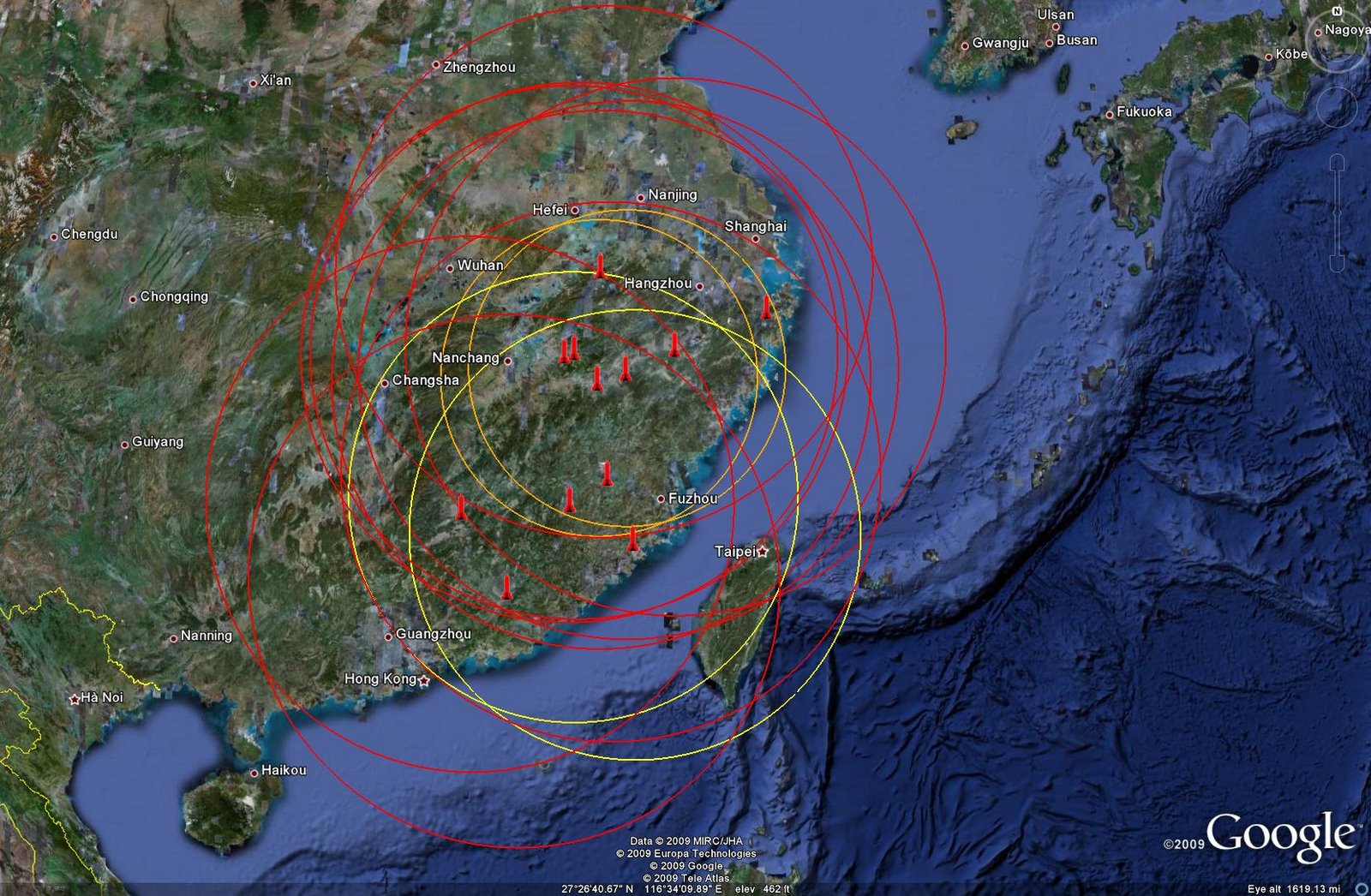
With
a
limited
ATBM capability provided by Tien Kung II, Tien Kung III, and
PATRIOT PAC-2 SAM batteries, the island of Taiwan could easily be
overwhelmed by incoming weapons, even considering the October 2008
approval by the United States Congress of a PAC-3 sale to the Taiwan
Authority. The deployment of accurate, conventionally-armed ballistic
and cruise missiles makes the missile threat to the island of Taiwan
far more likely to become part of a military option. In short, a
determined missile strike on the island of Taiwan could be carried out
in
a manner guaranteeing its success, should the Chinese government wish
to expend the number of weapons necessary to oversaturate the ATBM
capable systems. Given the number of missiles deployed by the 52nd
Base, it would appear that at least part of that equation has already
been satisfied.
The most important feature of the 2nd Artillery
Corps is mobility. A great deal of effort was made during the 1970s and
1980s to improve mobility and reduce the readiness time of deployed
systems. Developmental systems which reached maturity in the 1990s and
2000s were all designed to be highly mobile; a great deal of the
successes in this regard have stemmed from the maturation of the solid
rocket motor industry.
Mobility enhances the survivability of
deployed assets, making it harder to accurately target them due to a
potential lack of consistently accurate positioning data. The only
issue with mobile systems is the need for accurate pretargeting
position data to prepare the onboard guidance systems. Using
presurveyed and prepared launch sites alleviates a portion of this
problem, but provides enemy forces with locations to monitor for
deployed missile systems. Adequate intelligence and indications and
warning information must also be possessed in order to ensure that
missiles are field deployed prior to the outbreak of armed conflict,
lest the launchers be destroyed in-garrison before they have a chance
to be loaded and deployed.
|
Future
Force Development
The
current ICBM force in China represents a token strategic deterrent
incapable of waging a nuclear counterforce or counterstrike campaign.
While silo-based DF-5A missiles are survivable to a degree, silo
positions can be located and targeted for preemptive strike should the
need arise. China has taken measures to conceal
these
positions, but they can still be located through thorough
imagery analysis.
To
increase survivability and reduce launch preparation time, the solid
propellant DF-31 and DF-31A road-mobile ICBMs have been developed and
are being fielded. Liquid-fueled DF-5A missiles may not employ storable
liquid fuel propellant, possibly requiring a lengthy fueling process
before firing.
The DF-31 appears to have been superceded by
the longer-ranged DF-31A capable of reaching the entire United States,
with only the 813th Brigade at Nanyang and possibly the
unidentified
brigade at Xixia definitely operating the system. The main drawback of
the DF-31, apart from the shorter range when compared to the DF-31A, is
the lack of an off-road capability. It is believed that a new off-road
capable TEL is being developed for the DF-31A, allowing the weapons to
be deployed further afield from garrisons in areas where launch
positions would be much harder to identify.
The deployment of
increased numbers of DF-31 and DF-31A systems will finally allow China
to obtain a survivable, credible counterforce and counterstrike
capability. The presence of UGFs supporting these systems allows them
to remain hidden prior to launch, perhaps deploying after an initial
nuclear attack to perform a counterstrike mission. MIRVing these
weapons would increase the effectiveness of each launcher, and when
combined with the PLAN's evolving SSBN fleet would allow a smaller
number of launch platforms to serve as a counterforce option and
credible deterrent to any nuclear strike, should a “launch on warning”
posture be adopted with sufficient support assets.
One mission
being developed for the 2nd Artillery Corps is that of
anti-carrier
strike using precision-guided conventionally armed ballistic missiles.
|
Conclusion
While
the 2nd Artillery Corps does not currently represent a
significant
nuclear deterrent force against either the United States or Russia, it
represents a very substantial risk to lesser regional nations,
due to the
large number of SRBM, MRBM, and IRBM assets currently deployed. As
ICBMs with higher mobility are deployed and more accurate conventional
theater
weapons enter service, the 2nd Artillery Corps will evolve
into a true
strategic deterrent and even more devastating regional military
force.
The ground
launched CJ-10 Long Sword is a strategic cruise missile modelled on the
United States BGM-109G GLCM and Soviet RK-55 Relief, the latter both
scrapped under treaty obligations. Chinese sources credit this missile
with a range of up to 1,100 nautical miles. It carries a range of
different 770 lb or 1,100 lb warheads. The PLA Second Artillery Force
has currently up to 30 deployed TELs (Chinese internet).
|
References and
Notes
- A Google Earth file containing the placemarks used
in the generation of this article can be downloaded here.
This
file
contains every identified facility associated with the units
and locations described above.
- Satellite imagery provided courtesy of Google Earth
- The Chinese Second Artillery Corps: Transition
To Credible Deterrence; Bates Gill, James Mulvenon, and Mark Stokes
- DoD Annual Report To Congress: Military Power of
the People's Republic of China (2008 and 2009 reports)
- The
DH-10
Reaches
IOC
- Chinese
Strategic Missiles
- 2nd
Artillery Units & Inventory
- Chinese
Missile
Facilities
- Chinese
Nuclear
Facilities
- SC-19
Designation
Revealed
- Chinese Nuclear
Forces and U.S. Nuclear War Planning
- China's
Ballistic
Missile
Programs
- More information on ASBM developments can be found here.
|
|
 |
Imagery Sources: Xinhua;
PLA-AF; MilitaryPhotos.net;
other Internet sources.
|
|
Technical Report
APA-TR-2009-1204
|
|
![Home - Air Power Australia Website [Click for more ...]](APA/APA-Title-Main.png)
![Sukhoi PAK-FA and Flanker Index Page [Click for more ...]](APA/flanker.png)
![F-35 Joint Strike Fighter Index Page [Click for more ...]](APA/jsf.png)
![Weapons Technology Index Page [Click for more ...]](APA/weps.png)
![News and Media Related Material Index Page [Click for more ...]](APA/media.png)
![Surface to Air Missile Systems / Integrated Air Defence Systems Index Page [Click for more ...]](APA/sams-iads.png)
![Ballistic Missiles and Missile Defence Page [Click for more ...]](APA/msls-bmd.png)
![Air Power and National Military Strategy Index Page [Click for more ...]](APA/strategy.png)
![Military Aviation Historical Topics Index Page [Click for more ...]](APA/history.png)
![Intelligence, Surveillance and Reconnaissance and Network Centric Warfare Index Page [Click for more ...]](APA/isr-ncw.png)
![Information Warfare / Operations and Electronic Warfare Index Page [Click for more ...]](APA/iw.png)
![Systems and Basic Technology Index Page [Click for more ...]](APA/technology.png)
![Related Links Index Page [Click for more ...]](APA/links.png)
![Homepage of Australia's First Online Journal Covering Air Power Issues (ISSN 1832-2433) [Click for more ...]](APA/apa-analyses.png)

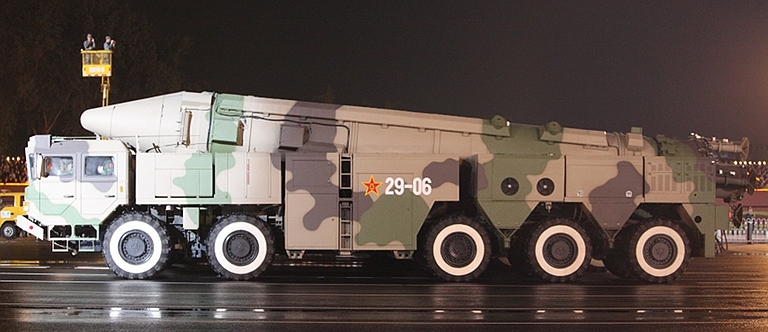

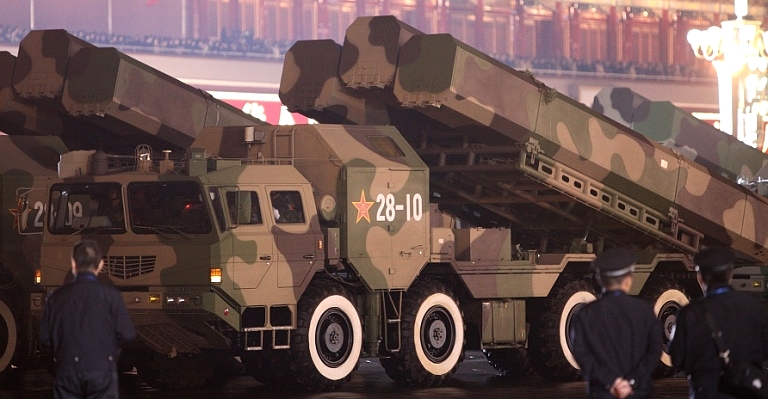

![Sukhoi PAK-FA and Flanker Index Page [Click for more ...]](APA/flanker.png)
![F-35 Joint Strike Fighter Index Page [Click for more ...]](APA/jsf.png)
![Weapons Technology Index Page [Click for more ...]](APA/weps.png)
![News and Media Related Material Index Page [Click for more ...]](APA/media.png)
![Surface to Air Missile Systems / Integrated Air Defence Systems Index Page [Click for more ...]](APA/sams-iads.png)
![Ballistic Missiles and Missile Defence Page [Click for more ...]](APA/msls-bmd.png)
![Air Power and National Military Strategy Index Page [Click for more ...]](APA/strategy.png)
![Military Aviation Historical Topics Index Page [Click for more ...]](APA/history.png)
![Information Warfare / Operations and Electronic Warfare Index Page [Click for more ...]](APA/iw.png)
![Systems and Basic Technology Index Page [Click for more ...]](APA/technology.png)
![Related Links Index Page [Click for more ...]](APA/links.png)
![Homepage of Australia's First Online Journal Covering Air Power Issues (ISSN 1832-2433) [Click for more ...]](APA/apa-analyses.png)
![F-111 Aardvark Index Page [Click for more ...]](APA/f-111.png)
![F/A-18 Hornet and Super Hornet Index Page [Click for more ...]](APA/fa-18a.png)
![Aerial Refuelling and Airlift Capabilities Index Page [Click for more ...]](APA/aar-lift.png)
![Directed Energy Weapons and Electromagnetic Bombs Index Page [Click for more ...]](APA/dew.png)
![Notices and Updates Index Page [Click for more ...]](APA/notices-128.png)
![APA NOTAM and Media Release Index Page [Click for more ...]](APA/notams-128.png)
![APA Research Activities and Policy / Technical Reports Index [Click for more ...]](APA/research-128.png)
![Search Air Power Australia Website [Click for more ...]](APA/search-128.png)
![Briefings and Submissions - Air Power Australia [Click for more ...]](APA/briefs-128.png)
![Air Power Australia Contacts [Click for more ...]](APA/contacts-128.png)
![Funding Air Power Australia [Click for more ...]](APA/funding-258.png)


